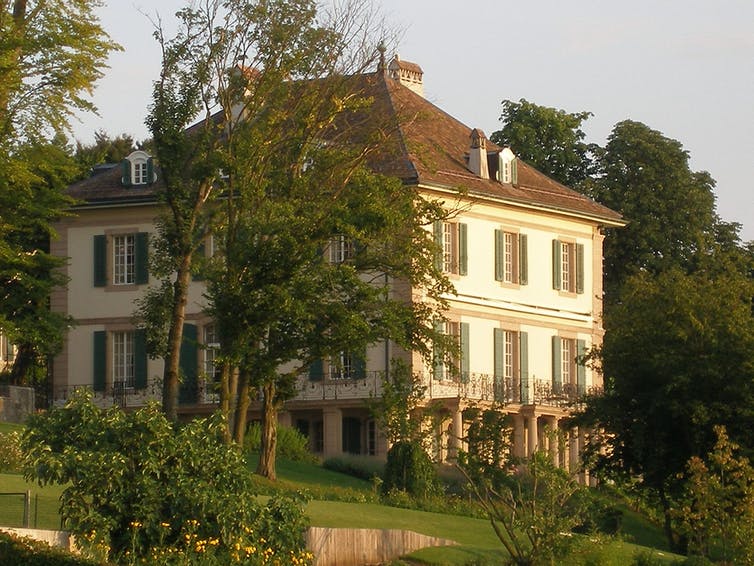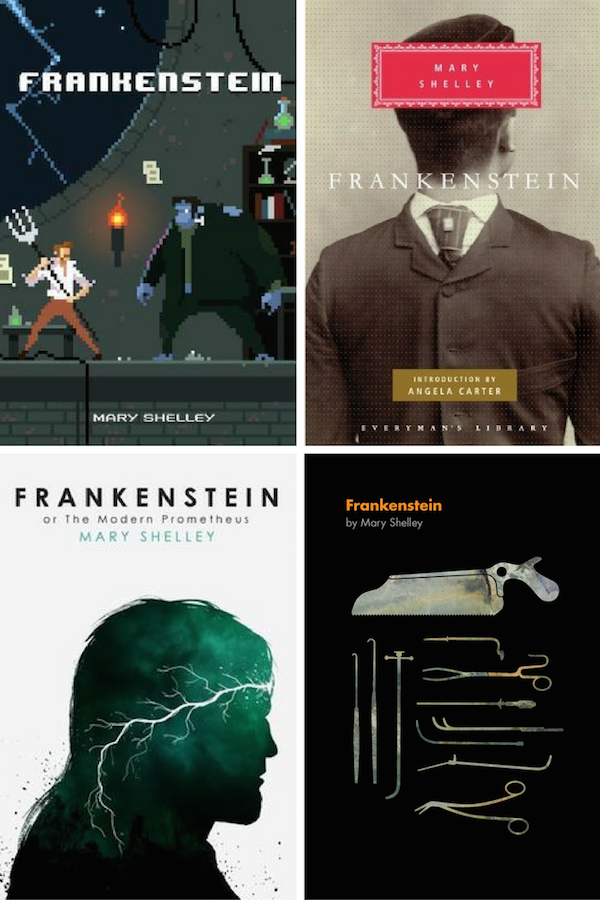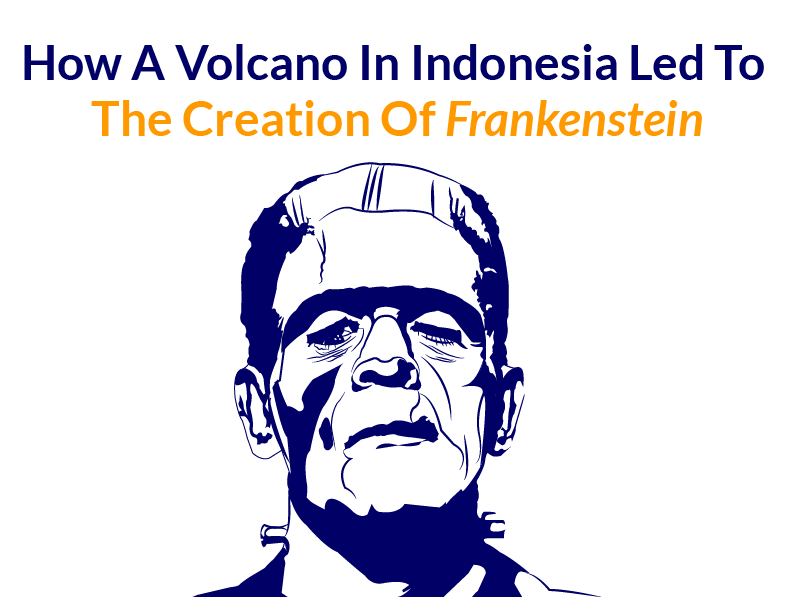Feature
How A Volcano In Indonesia Led To The Creation Of Frankenstein

Richard Gunderman, The Conversation
July 04, 2018
As the summer of 2018 draws to a close, we mark the 200th anniversary of the birth of one of the most famous novels in the English language, a work that also recounts the creation of perhaps the most monstrous character in English literature. The story of how it came to be is no less extraordinary than the book itself, an assessment made all the more remarkable by the fact that most of us have long had the identity of the monster all wrong.
I am speaking, of course, of Mary Shelley’s Frankenstein, a tale that has been told and retold in novels and comic books, on stage and screen, and in classrooms and campfires around the world countless times. Its origins lie in a gathering of truly extraordinary people at a lake house in Switzerland, occasioned by one of the greatest catastrophes in human history.
This cataclysmic event was the eruption – explosion, really – of Mount Tambora in the Dutch East Indies – present-day Indonesia. On April 10, 1815, the volcano ejected an estimated volume of 36 cubic miles (150km³) of volcanic ash into the Earth’s atmosphere, the largest such eruption in recorded history.
The very next year the dimming of the sun spawned the “year without a summer” throughout North America and Europe, resulting in the worst famine of the 19th century.

(Villa Diodati, where Mary Shelley first thought of Frankenstein. Source:
Robertgrassi via Wikimedia Commons)
A cold, wet and dark summer vacation
In the summer of 1816, an extraordinary group gathered at a house at Lake Geneva, expecting to enjoy fresh air and sunshine. Its members included the Romantic poets Lord Byron and Percy Shelley, Percy’s mistress Mary, then 18, Byron’s personal physician John Polidori, and Mary’s stepsister Claire, who was pregnant with Byron’s child. Two years earlier, Mary had eloped with the married Percy, though the couple was able to wed only after Percy’s wife committed suicide.
Mary was no ordinary teenager. She was the progeny of two of the most notable figures of her age. Her father, William Godwin, was a writer and philosopher well known for his promotion of utilitarianism and anarchism. Her mother, Mary Wollstonecraft, penned perhaps the greatest work of feminism in the English language, A Vindication Of The Rights Of Women. Sadly, however, Mary grew up motherless, as Wollstonecraft died soon after giving birth to her.
Mount Tambora’s eruption produced an unusually cold, dark and wet summer, making outdoor activity unappealing. So the Lake Geneva party stayed indoors, reading to each other from a collection of German ghost stories. When they finished the book they found themselves at a loss what to do next, so Byron challenged each of the group’s members to devise their own ghost story and share it with the others.
Rising to the challenge, Polidori produced the world’s first published vampire story, spawning a genre that later included the tales of Count Dracula. Mary, however, suffered from writer’s block. At last an idea came to her in a “waking” dream, most likely inspired by discussions of the discoveries of Italian scientist Luigi Galvani, who had shown that electricity could cause the leg muscles of a dead frog to twitch.
As Mary reports it, she saw:
“The pale student of unhallowed arts kneeling beside the thing he had put together. I saw the hideous phantasm of a man stretched out, and then, on the working of some powerful engine, show signs of life, and stir with an uneasy, half-vital motion.”
Thus was born Frankenstein, initially envisioned as a short story. But as Mary worked on it over the rest of the year and into the next, it evolved into what is sometimes regarded as the first science fiction novel.
The book was published two years after that gloomy summer of 1816 as Frankenstein: or, the Modern Prometheus, recalling the Greek titan who stole fire from the gods and gave it to man, for which he was chained to a rock where an eagle ate out his liver every day.

(Frontispiece of the 1831 edition of Frankenstein. Source: Theodore Von Holst via Wikimedia Commons)
Frankenstein isn’t the monster in the story
Nearly everyone supposes that the monster in Frankenstein is the monster, Frankenstein. This is wrong on two counts. For one thing, the eight-foot-tall creature that Victor Frankenstein assembles out of the parts of dead bodies and then shocks to life is not named Frankenstein. In fact, the creature has no name at all. Frankenstein can only bring himself to refer to it as the monster, creature, fiend, demon, or simply “it.”
More importantly, as I see it, the real monster in Frankenstein is not the creature but the creator, Victor Frankenstein. He aims to create a new species, not for the benefit of the world, but to glorify himself. He styles himself a philanthropist, but he is, in fact, a supreme egoist. He labours heroically at his task, allowing himself to attend to nothing else, but at the moment that his creation first stirs, he discovers that he cannot bear the sight of it:
“Now that I had finished, the beauty of the dream vanished, and breathless horror and disgust filled my heart. Unable to endure the aspect of the being I had created, I rushed out of the room… .”
The creature, intelligent and sensitive, is left to fend for himself. He longs for companionship, but his appearance evokes in others only two responses: flight or fight. He yearns for a relationship with his creator, but Victor will have nothing to do with him.
Spurned and reviled by everyone he encounters, the creature eventually lashes out, killing Victor’s brother, his best friend and, on their honeymoon, his wife. The creature tells him, “I ought to be thy Adam, but I am rather thy fallen angel.”

(Frankenstein Book Covers. Source: BookRiot)
A tale of hubris and power
Frankenstein is far more than a monster story. It is a tale of hubris devoid of love, the overweening pride of a scientist so obsessed with his own powers that he seeks to make himself a god. Like Mary Shelley herself, who not only grew up without a mother but also blamed herself for her mother’s death, the creature is motherless, with no one to love him. This misery makes him a fiend, and when his unrequited longing turns to hatred, he lashes out against his creator. Acquiring the capacity to do god-like things cannot make us gods, above all when there is no love.
There is far too much in Frankenstein to recount here. There is the story of Elizabeth, an orphan raised in the Frankenstein home who eventually becomes Victor’s wife.
There is the account of Victor’s education, which progresses from the study of the natural sciences to an irresistible impulse to create a new and better kind of man.
And there is the epistolary structure of the novel itself, attributed to Robert Walton, a failed writer who sets off in pursuit of fame to explore the frigid North Pole where he encounters the nearly dead Victor, drawn there in hot pursuit of the monster.
Were it not so thoroughly documented, the story of Frankenstein’s creation would beggar belief. An unparalleled cataclysm on the other side of the globe sets the stage for a gathering of literary titans at which an 18-year-old first crafts an unearthly yet timeless tale of unbridled human arrogance. Although Mary Shelley’s masterpiece ranks as one of the most unforgettable works in world literature, the tale it tells in no measure outshines the incredible story behind its creation.
Richard Gunderman, Chancellor’s Professor of Medicine, Liberal Arts, and Philanthropy, Indiana University.
This article was originally published on The Conversation. Read the original article. ![]()
Have you read Frankenstein? Who do you think is the real monster in the book? Share with us in the comments below.


The Conversation
The Conversation is an independent, not for profit, network of newsrooms. In a world where the media may not be entirely trustworthy, The Conversation aims to provide the public with responsible journalism, that is non-biased and not backed by any political or private enterprise that could influence its voice. It is funded only by non-partisan sponsorship.



Check your inbox to confirm your subscription
We hate spam as much as you hate spoilers!